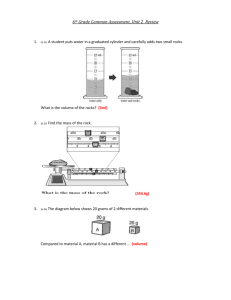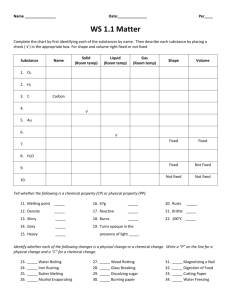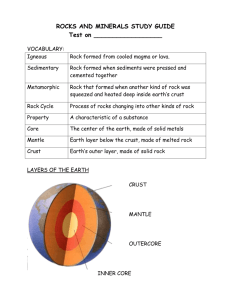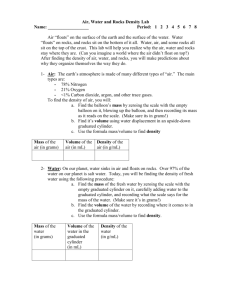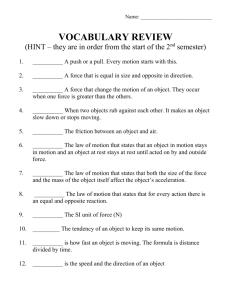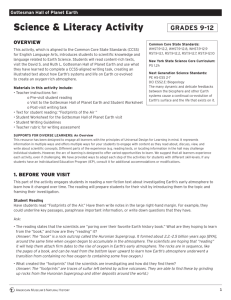Earth Density REVISED
advertisement
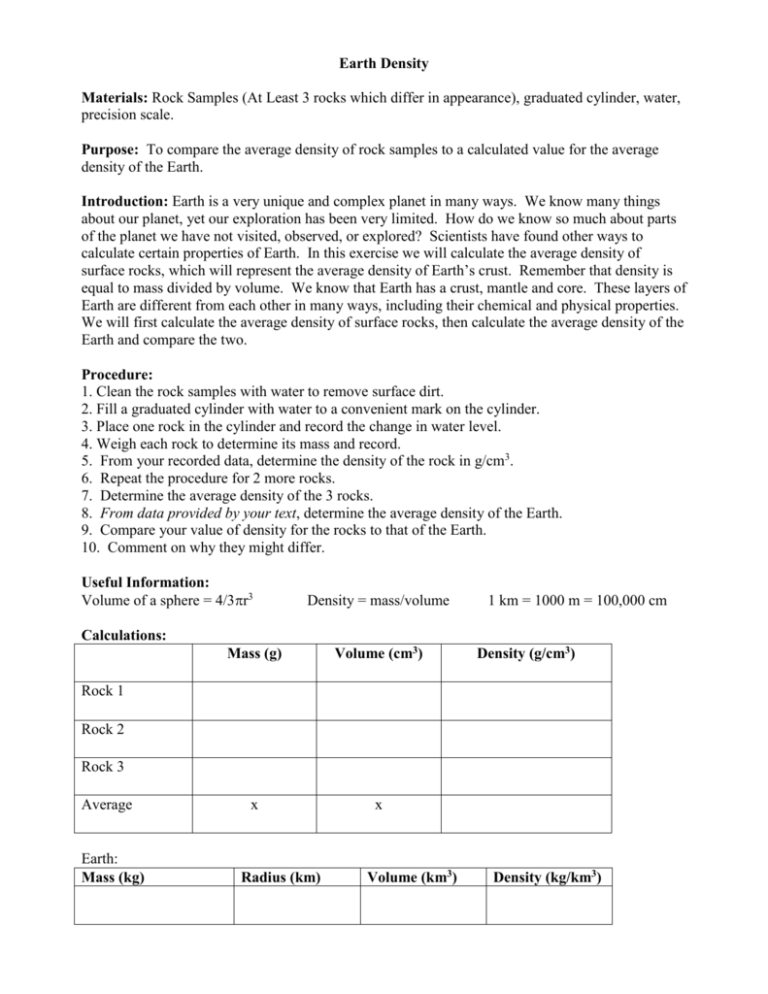
Earth Density Materials: Rock Samples (At Least 3 rocks which differ in appearance), graduated cylinder, water, precision scale. Purpose: To compare the average density of rock samples to a calculated value for the average density of the Earth. Introduction: Earth is a very unique and complex planet in many ways. We know many things about our planet, yet our exploration has been very limited. How do we know so much about parts of the planet we have not visited, observed, or explored? Scientists have found other ways to calculate certain properties of Earth. In this exercise we will calculate the average density of surface rocks, which will represent the average density of Earth’s crust. Remember that density is equal to mass divided by volume. We know that Earth has a crust, mantle and core. These layers of Earth are different from each other in many ways, including their chemical and physical properties. We will first calculate the average density of surface rocks, then calculate the average density of the Earth and compare the two. Procedure: 1. Clean the rock samples with water to remove surface dirt. 2. Fill a graduated cylinder with water to a convenient mark on the cylinder. 3. Place one rock in the cylinder and record the change in water level. 4. Weigh each rock to determine its mass and record. 5. From your recorded data, determine the density of the rock in g/cm3. 6. Repeat the procedure for 2 more rocks. 7. Determine the average density of the 3 rocks. 8. From data provided by your text, determine the average density of the Earth. 9. Compare your value of density for the rocks to that of the Earth. 10. Comment on why they might differ. Useful Information: Volume of a sphere = 4/3r3 Density = mass/volume 1 km = 1000 m = 100,000 cm Calculations: Mass (g) Volume (cm3) x x Density (g/cm3) Rock 1 Rock 2 Rock 3 Average Earth: Mass (kg) Radius (km) Volume (km3) Density (kg/km3) Questions: 1. What are the values you obtain for average density of Earth’s crust compared to the average density of the planet as a whole? 2. How different, if at all, are the two values? 3. What does this say about the density of the other parts of the planet (The mantle & core)? 4. What other materials might make up Earth? Explain why you think this.
